First off, hello everyone! For a long time I have not written any reviews here (namely, since November 2013), meanwhile, during this time I have ordered about two dozen more products, some of which may be quite interesting to you. So today I start new series reviews on what has been purchased on Aliexpress during this time.
So let's start with protective glasses for smartphones.
Why do you need a protective glass for your smartphone
Many people ask the question: is it necessary protective glass on a smartphone? Or can you just walk?
I think no one should explain that the phone screen needs to be protected from scratches and external influences. Even if there are all sorts of “gorilla eyes” there, scratching a new smart for several thousand (or tens of thousands?) Rubles is at least a shame. Not to mention that you won’t sell it later (and I already sold a couple of my old phones), well, it looks very miserable. Approximately like this:
You can clearly see how the film peels off at the edges.
As a rule, for protection, people stick a film on the screen of a smartphone, and I am also quite for a long time did the same. Until I found out that there are special protective glasses for the screens of our phones.
What are the advantages of protective glass for the phone?
- Appearance - the glass just looks more beautiful, cool and expensive, you may not even notice that this is not a native screen. My mother once asked me: “Why don’t you stick a film”?
- It is more scratch resistant than the same film. I did not scratch it with a diamond, but it lives quite tolerably in my pocket.
- In the event of a fall, it is the glass that will break first, and not your screen - and a friend of mine had this ... glass for two hundred rubles saved the screen, which costs three thousand.
- It is easier to stick than a film, although skill is also needed here, but the tube is full of videos on how to do this.
- And of course, the sensations - running a finger on a glass screen is much more pleasant than on a film.
But what about the cons of a protective glass for a smartphone?
They also have…
- On average, protective glass on the phone is more expensive than a similar film. Especially if it's original. But no one is forcing you to buy glass by the mower.
- It does not last forever, and scratches still remain on it, so do not believe that it does not matter how much. But it lives much longer than the film.
- It may begin to fall behind if it is unsuccessfully glued. Then you will get the impression that your screen is moving away) (Photo at the end of the article).
- It is more difficult to deliver, because the likelihood that it will arrive broken or cracked is much higher than with ordinary film, which, in general, you can play football with. So be.
- The film is more versatile, and, if anything, it can be cut to fit the phone or cut holes in it for a camera or microphone. The glass will just shatter. So be careful when choosing a protective glass for your smartphone model.
How much does a protective glass for a phone cost?
Depending on where to get it, well, they also differ in quality. I took mine to Ali for my old Huawei for 7 bucks, then (in October 2014) it was about 200 rubles.

Protective glass on the new Huawei
Today it is almost a "five". Bucks grew up, what can you do. Although, my friend buys similar glasses in joint purchases of two hundred rubles, and seems to be quite satisfied. It's hard to say what the quality is, but in any case, it's better than regular film.
Where can I buy tempered glass for my phone?
On Aliexpress) My whole site is about this. I will not give a link to my glass, Ali gives a 404 error on it, besides, my glass was selected under specific model- Huawei Honor 3C - they are no longer produced. But the store itself on Ali is alive and well! You can look for glasses for different models smartphones in it.
You can also use the search throughout Aliexpress by typing, for example: protective glass smartphone, or something like that. You can also specify your phone model, if it is here, then there will be.
The main thing is to follow the rules that I am talking about when choosing a product and a seller. As you understand, it makes no sense to give links to specific glasses, because everyone has different models. And then there's the next big question...
Is there a universal protective glass for 5, 5.5, 6 inches?
In theory, yes. But in practice - different phone models have different holes and there is a different screen format. That is - five inches, this is, of course, good, but the aspect ratio will be slightly different - and you won’t stick it normally. Only in the case of film - it can be cut or holes can be made, under a microphone or camera. It won't work with glass. So if you have more or less famous model phone - look for a protective glass just under it.
Well, if you have an obscure Chinese know-name, then you can take anything, about the same size.
Protective glass - not only in the front, but also in the back!
And there is this too! In the same store that I was talking about, I ordered not only a protective glass for the phone screen, but also a protective back glass cover:
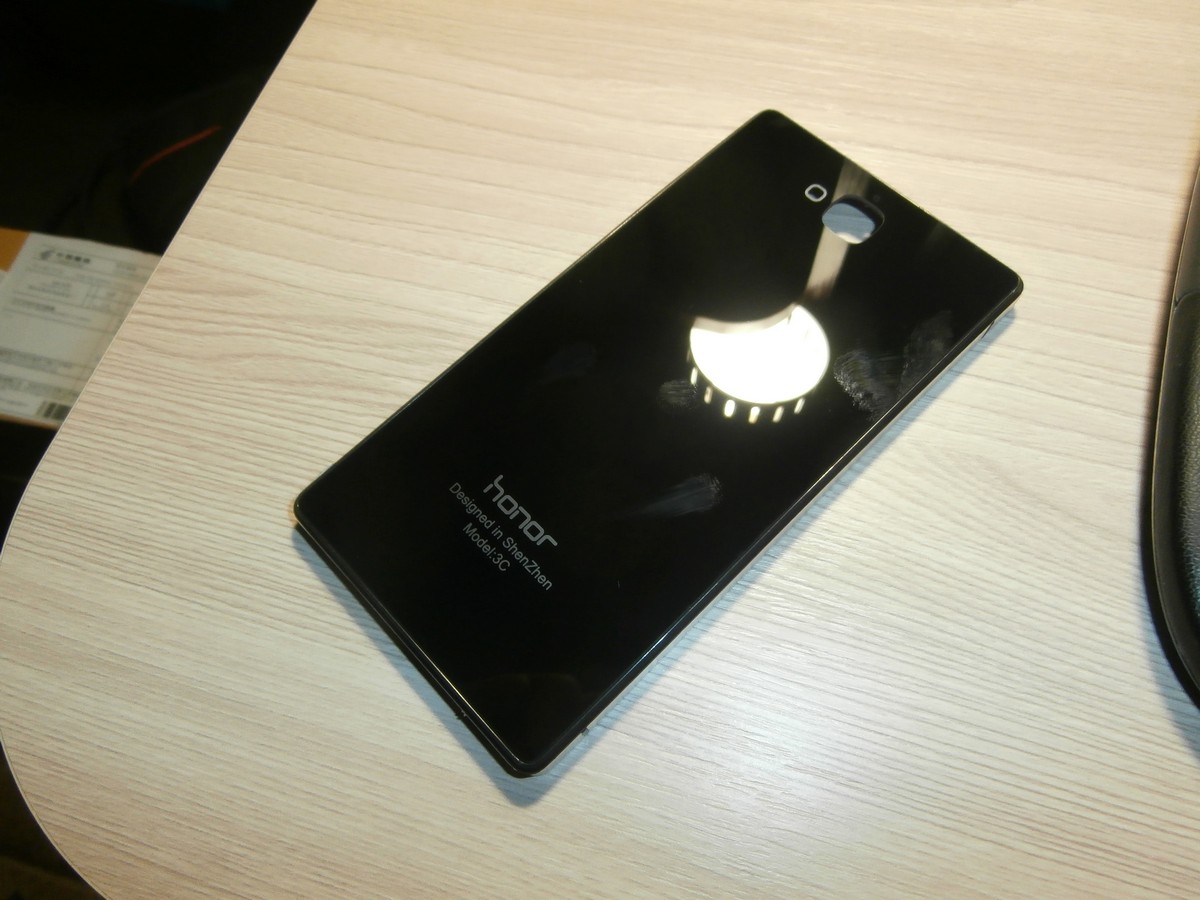
There are also such cool plastic-glass rear bumpers for phones
There are all the same advantages of conventional protective glass. In this case, the back cover is completely changed. This is very convenient, because I thought for a long time how it is attached to the plastic case. And there is essentially the same plastic on which the glass is already pasted. Of course, if you have a phone with an aluminum cover, you don't need this innovation. But it looks great on my Huawei. And again - the mother asked - why do you have it without a case?) While the phone is protected both in front and behind ...
How fast does it all arrive?
Slightly deviated from the format of the reviews.
So, I ordered my parcel of glass and rear glass (more precisely, glass-plastic) bumper on 10/20/2014, it went like this, it takes 21 days:

The way of sending with all this junk
What was inside? What does this safety glass look like?
Oddly enough, but there were protective glasses for the phone + I also ordered a spare cover for some reason:




















And how do these glasses feel?
Actually, cool, I liked it. I sold my Huawei a year ago to a friend, yes, the glass on it was frayed and covered with scratches, but - she immediately ordered a new one in joint purchases, pasted it - and the phone is like new! That's the point of these things.
Well, for my new RedmiNot 2, which I also bought on Ali, I no longer ordered glass, but asked the seller to put it as a gift. And put it! True, I glued it a little crookedly, and now it seems that I have a cap on the screen, but they won’t steal it)

And this is what happens when you glue the glass crookedly
Summarizing
I thought about throwing a couple of links and photos, but almost a treatise about these glasses came out. As you can see, the protective glass on the phone is a really cool, worthwhile thing. I recommend them to all my friends as well. Many buy and are quite satisfied. I recommend them to you too. Not necessarily on Ali. If you find it cheaper somewhere, great. But I know that in our local networks they will cost horses. And they will also be bought in China.
I think you understood the main message of the article and now you know where to buy a touch screen for your phone. Films - yesterday)
You may also be interested in these articles:
Mobile phone Huawei U8832D Shine
Binoculars SAKURA Zoom
Sports watch with heart rate monitor and pedometer Healthy Living
How to leave feedback on Aliexpress and confirm the order
How to track a parcel from Aliexpress
How to fill in the address on Aliexpress
How to pay for an order on Aliexpress
How to return money from Aliexpress and cancel an order
If you are asked about “protective glass for a smartphone”, then you will unanimously say “Gorilla glass” and you will be absolutely right - “there is such a letter in this word”, this is what Leonid Yakubovich said. But the fact is that Gorilla glass protective glasses are used mainly in mobile devices (mainly in smartphones) and are not sold separately. And as practice shows, it is not so difficult to damage the screen of a smartphone (even if it is protected by a “gorilla”) - just scratch it with something more durable (a ring with a diamond, grains of sand in your pocket, etc.). And here's how to be? Is it really possible to change the screen every time it is covered with a “cobweb” from a couple of grains of sand in your pocket or sloppily lands from a seemingly small height?
One of the most reliable options– use of films or protective glasses. For a number of reasons, we don’t really like films, so today we will talk about protective glasses - using Mamoru Shield glass as an example.
broken screen- perhaps the most common injury in modern smartphones. And at the same time, the most annoying thing is that even if the device continues to function, your happiness will not be complete :) We know a lot of people who managed to damage the smartphone screen even at the stage of opening the package. Therefore, take care of the safety of the screen immediately - even before the first used signs appear on it. The sooner you do this, the longer your smartphone will be in new condition. And this is the first advice - you can not obey it, but after a couple of screen replacements, you yourself will come to this.
At the level of an axiom, a screen without protection is more vulnerable to all sorts of irritants. The statement is true for anything: gloved hands are more protected from adversity, as well as a soldier in a bulletproof vest. Therefore, when you have at least some kind of protection (film or glass), the screen itself will get in last turn.
Now a few words about why we don't really like tapes. More precisely, why in terms of protecting smartphone screens, we prefer glass.
At the level of another axiom, glass is stronger than film. You can start arguing that, they say, “the film is different, even cars are booked with it.” The film really is different, but the one that armor cars has nothing to do with smartphones. It is either thick and opaque, or transparent and thin, but unreliable - it gives only +5 to screen protection, while glass can be both thick (reliable) and transparent. Glass is thicker and stronger - just accept the fact.
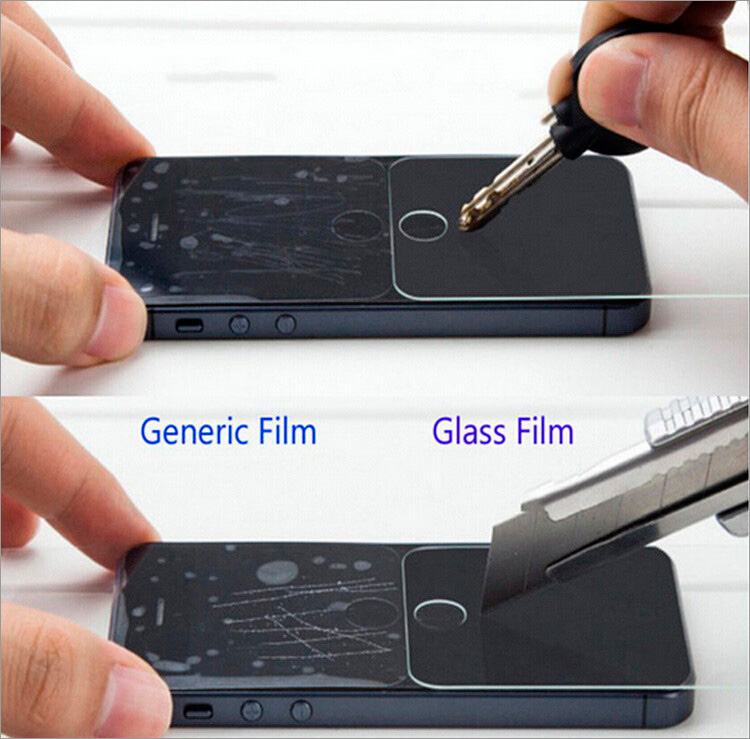
Arguments in favor of glass in the battle against film:
- The film is more difficult to stick. On the Internet there is a description of different tactics for sticking a film on the screen “without a single speck of dust” - some of them reach the point of absurdity. But this is the most offensive of all - to buy an expensive film and paste it unevenly and / or with a couple of dust particles, which are very problematic to get “without consequences”. Admit it - you had this: somewhere from the edge of the freshly pasted film, a speck of dust interfered, which only became more noticeable over time - it was a pity to peel off the film, since waiting for the delivery of a new one is even more lazy, and buying nearby from resellers is too expensive.
- If you peel off the film (accidentally hit it with your fingernail or something else flat, such as a bill), then a trace will remain and the film will no longer stick as well as it was originally.
- Price. Alternatively, you can buy a pack of noname films and re-paste them once a week or a month - cheap and cheerful. If we talk about really high-quality films like Spigen SGP, then they cost quite a lot of money, but, admittedly, they are very high quality. In a separate sentence, I would like to mention matte films, whose tactile sensations are to the liking of so many: if you use a cheap matte film with a Retina display (almost any modern smartphone), then the picture on the screen will no longer be so pleasing to the eye - due to graininess, which will be especially visible on a white background.
Mamoru glasses
On some sites you can find the so-called "shockproof film", after reading the description of which it becomes clear that this is not a film at all, but very thin glass. Mamoru protective glasses belong to this class - they are thin, quite elastic (you can bend a little) and very durable - at the level of glasses latest generation Gorilla glass. There is another type of "glass" that Mamoru does not belong to - made of plastic. They can also be bent, but their protective characteristics are not even close to the characteristics of glass.

As a rule, protective glass is created separately for each of the smartphones - if we talk about Mamoru glasses, they are available (including our stock) for most popular models. Each is glass with technical cutouts for buttons, cameras, speakers and sensors. By gluing such glass, you practically lose nothing - neither the appearance of the smartphone (in some cases the glass is simply not visible), nor its dimensions (the glass thickness is 0.2-0.4 mm).
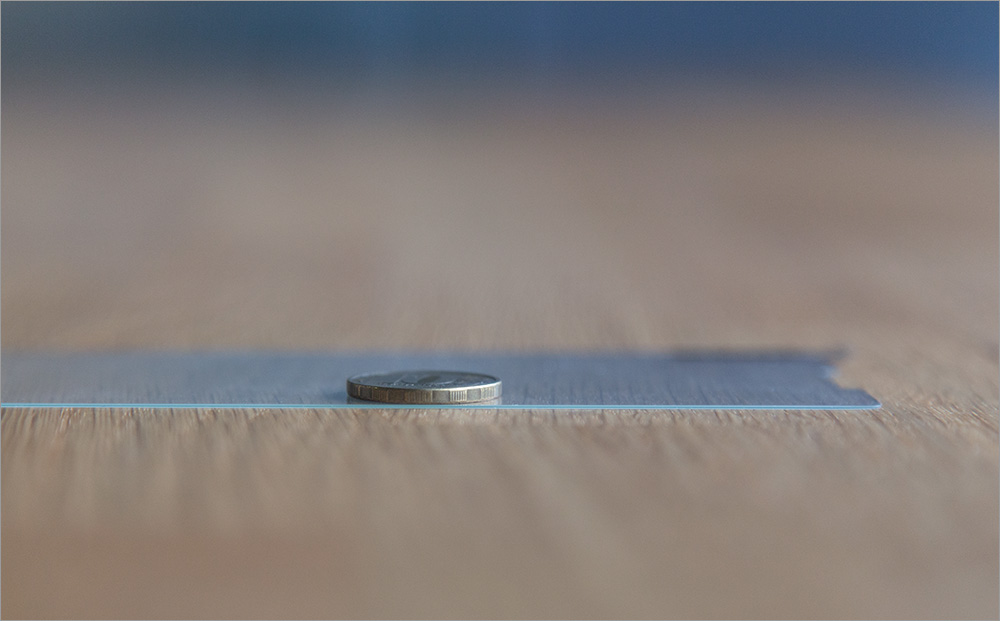
But at the same time, you get screen protection, which is not afraid of earrings during a conversation, or nail scissors in a woman's purse, or keys in a pocket, or anything else - it is difficult to scratch the glass. But you can :)
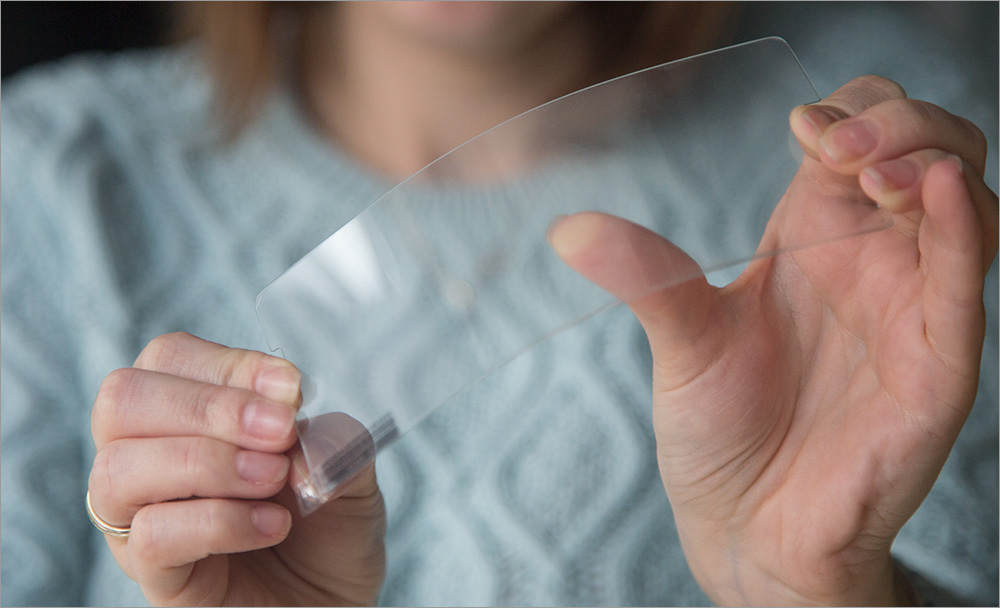
If the smartphone falls, it is the protective glass that will be the first to take a hit, absorbing the impact and, in most cases, preserving the screen itself - it will be enough just to remove the glass and stick a new one. Yes, it’s unpleasant, but believe me at the level of another axiom - changing the protective glass on a smartphone is faster and cheaper than changing the entire screen.
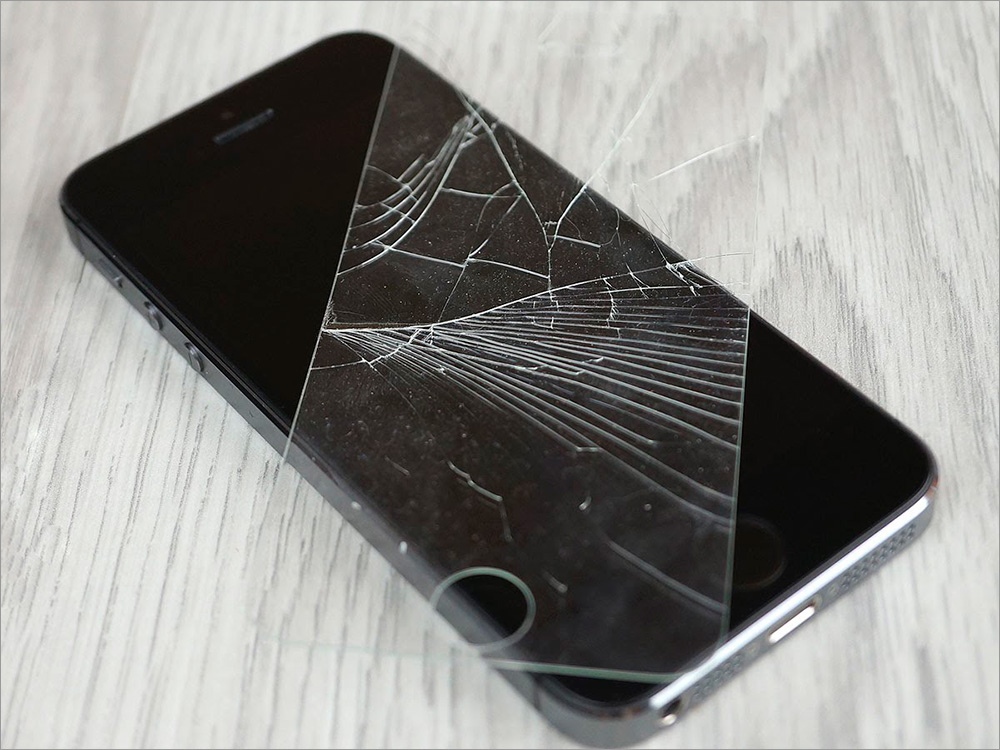
I bought a new expensive smartphone, put it in my back pocket, get into the car and hear a crunch. I think to myself: at least the spine!
Mamoru Shield Premium Tempered Glass Screen Protector (MMR-NOTE4) for Samsung Galaxy Note 4 serves as an illustration for the article - in addition to perfect transparency, this tempered glass offers high strength (9H) and an oleophobic (grease-repellent, anti-fingerprint) coating, and at the moment writing an article, the cost of glass is 965 rubles. For comparison, a Spigen film for the same smartphone also costs around a thousand rubles, and changing the screen of a smartphone in Moscow costs an average of 9-10 thousand rubles. Glass on the iPhone 6/6+ costs 1990 rubles, while screen replacement costs 8-10 thousand.

Complete with glass - alcohol + lint-free wipes and a special scraper needed for glass stickers. Then we spend one minute on the sticker and ... and you're done!
Unlike other manufacturers, the cost of glass does not depend on the smartphone model and is a modest 965 rubles. And for Geektimes users, we have organized a special 25% discount (only valid this week) - just enter the promo code GEEKTIMES-MAMORU when ordering . And yes, the price includes free shipping!
Take care of your devices! Well, thank you for your attention - we are ready to answer your questions.
Display protection mobile device- something that interests many users. Any mechanical damage to the screen can be accompanied by very serious problems. There can be both small freezes in the operation of the sensor, and the screen module can completely fail. Therefore, it is recommended to apply on each model protective covering. It provides cell phone protection. different conditions. However, when buying protective glass, certain recommendations must be followed. In our article, you will learn how to choose a protective glass for your smartphone.
What is safety glass
The protective coating is made from a specialized " tempered glass". And it's pre-processed chemical compounds. When compared with an ordinary film, it can be understood that a device with a protective glass is several times thicker, which indicates its reliability.
Before choosing a protective glass, it is worth knowing a little about the features of this display protection.
High-quality protective glass, which is glued to the phone, consists of several layers:
- Silicone base;
- Retaining layer;
- anti-reflective;
- Safety;
- Oleophobic.
In addition, there are three types of these glasses:
- Matte;
- glossy;
- Private coverage.
Frosted glasses distort the picture at least a little, their advantage is that in bright light, the picture on the screen of a mobile device does not fade.
Glossy coatings are considered the most common. It is not visible on the display, but it performs 100 percent protective functions.
Private coating is a darkened type of glass that has a certain feature. The image on the phone can only be seen at a right angle, looking from the side you can only see a black screen.
Below is how to choose a protective glass based on characteristics such as thickness and strength.
Protective glass thickness
Protective glasses on the iPhone and other models are distinguishable from each other by the thickness. The greater the thickness of the protective surface, the greater the reliability it provides. The range of glass thickness ranges from 0.15 to 1 mm. However, with a large thickness, the appearance of the device is disfigured. Therefore, it is recommended to choose average values - from 0.28 to 0.5 mm. At the same time, elegance is preserved in appearance and the display will be protected.
Recently, manufacturers have been resorting to various tricks to sell their goods faster. Various additional supercharacteristics that their product supposedly possesses are invented. As a result, buyers do not get what they really needed. Therefore, you should always pay attention to two points when buying:
- strength level;
- Protective glass thickness.
When choosing, remember that you need to strike a balance between flexibility and the degree of protection. By choosing a protective glass with a lower degree of protection, you can expect that with frontal impacts protective accessory won't do it. You also need to remember that the thickness does not in any way affect the resistance to prints or scratches.
Strength - important parameter, and it is best to always purchase glass with a level of 9H. It provides maximum protection when the phone falls on the end. However, a higher value in 9H can make the glass inelastic and thus break on impact.
Recently, new glasses with an additional level of protection have begun to be produced. They have an oleophobic coating as well as 2.5D processing. The price of such protective glasses is much higher than usual, and therefore it is necessary to understand - “Do you need such glass or can you find some cheaper option?”.
How it works
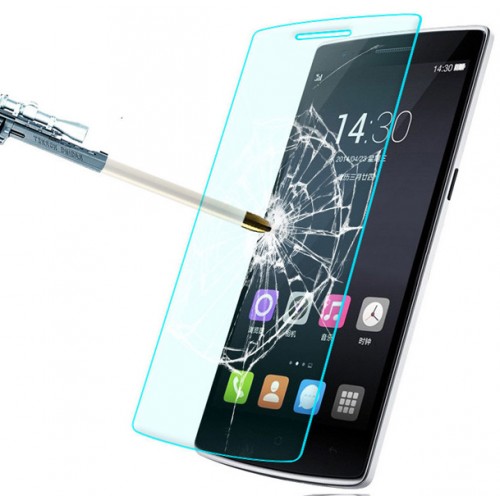
Choosing a great protective accessory can literally save your phone's life. It works like this:
- If the screen surface is damaged, it is the protective glass that takes the load;
- Due to the rigidity of the glass, the impact momentum does not propagate to the display itself;
- Due to the strength of the protective glass, there are no impact marks on the surface of the phone.
However, do not think that by purchasing a protective glass it will be possible to throw mobile phone end into concrete. With a strong impact, the display coating can be destroyed and all the impact force will fall on the cell display and it will be impossible to save the device.
How to choose protective glass
In order not to be in a stupid situation, due to the constant tricks of unscrupulous sellers, you need to pay attention to the following aspects:
- Any of the protective glasses is made for a specific phone model. You should check before buying that the holes for the camera and speakers match;
- On the packaging of the purchased glass, its strength must be indicated;
- When choosing a thickness, you need to make a choice from your own preferences. We determine in what conditions the phone will be used. For everyday use, the average thickness is suitable;
- Choose the right coverage for you. A choice should be made between glossy and matte finishes.
Additional services are imposed by almost every seller. Sticking protective glass in a chain store varies from 200 to 600 rubles. And given that the protective glass needs to be changed 4-5 times a year, a decent amount comes out. There is nothing difficult in the process of sticking, and it can be done at home, thereby saving a decent amount.
Which company to choose protective glass
Due to the huge number of companies that produce safety glass, you can easily stumble upon a fake. And so you should carefully choose this protective accessory. You should not save money, because the integrity of the display in case of mechanical damage directly depends on protection. It should be understood that if the glass is called armored glass with 2.5D processing, and the packaging says that the hardness of this glass is 9H, it cannot be equivalent to the cost of a conventional film. Having met this, you can immediately understand that this is a scam.
However, cost is not always an indicator of quality. Basically, some of the expensive glasses are produced for models such as the iPhone or Samsung. You can save money when buying protective glass in the Aliexpress online store.
Here is a list of trusted manufacturers that produce great protective accessories:
- Mocolo;
- Bradno;
- Nilkin.
If speak about Russian manufacturers, it is worth highlighting the following two companies:
- Luxcase.
In almost all mobile phone stores, you can buy protective glass for Samsung or iPhone.
How to stick protective glass
The process of sticking this protective accessory at first glance may seem like a rather laborious process. However, after performing a few such actions, you can feel like an expert in this field.
Necessary tools for the procedure:
- Napkin;
- Napkin pre-soaked with cleaner;
- Scotch;
- glass cleaning solution;
- The safety glass itself.
- Wash your hands with soap and prepare the necessary tools;
- Wipe the entire surface of the smartphone with a damp cloth;
- If dust particles remain, remove them with the prepared adhesive tape;
- Remove the film from the protective glass;
- Install the protective accessory so that all holes match the phone buttons;
- Press lightly until the glass sticks on its own.
If voids suddenly form in which air accumulates, you can use bank card. Do not press too hard on the screen, the bubbles after gluing may disappear within two to three days.
How to remove the protective glass if it is broken
Unfortunately, no matter how professionally the protective accessory is pasted, there may come a time when it will have to be removed. This need may arise in the event of a strong mechanical damage, which will be received as a result of a blow or other similar circumstances. It should be understood that the protective glass is much more difficult to remove from the cell display than a regular film.
Armed with a bank card, you need to pry off the protection from any edge, and then walk with the card under the glass, thereby detaching the glass from the display itself. After doing this, you should walk with a dry cloth on the screen, removing dust particles.
Conclusion
In conclusion, we can say that there is nothing difficult in choosing a protective glass, as well as sticking it on the display itself. After reading our article, you learned how to choose a protective glass, and after carefully considering the instructions, you can stick or remove it without someone else's help.
What kind of protective glass will protect your smartphone from damage more reliably? Discussing the pros and cons different options and make a direct comparison.
The fact that the screen of a modern mobile device is its most vulnerable component is nothing more than a myth. Gadget manufacturers have spent a lot of effort and money to protect their devices from damage as much as possible, and their owners from repair costs. Smartphones owe their reliability primarily to protective glasses. Consider how to choose a protective glass for your smartphone.
Manufacturers equip phones protective glasses three types:
Gorilla Glass from the American company Corning
This glass was invented back in the 60s of the last century, however, with the release of smartphones, it began to be used only in the middle of the "zero". Corning itself has a 160-year history and is very proud to have made windows for the US space shuttles.
For 2016, several generations of Gorilla Glass have already been released - each new modification is significantly superior to the previous one. For example, the glass of the second version had better optical properties than the first modification, and Gorilla Glass 4 can even be called the champion in thickness - only 0.4 mm.
Dragontrail from Japanese manufacturer Asahi Glass
At Dragontrail best odds to push the clear leader Gorilla Glass on the market. This is also evidenced by statistics: sales of protective glasses for smartphone screens from Asahi have grown by 500% (!) over the past few years, and the number of regular customers among gadget manufacturers has increased to 40 companies.

Sapphire Glass by GT Advanced Technologies
This technology is beloved by Apple: on 5 sapphire glass protects the camera lens, on the iPhone 6 - the entire screen. Sapphire is considered the second most durable material after diamond, however, natural sapphire is out of the question in this case. The material is synthetic and is formed by the crystallization of aluminum oxide at high temperature.
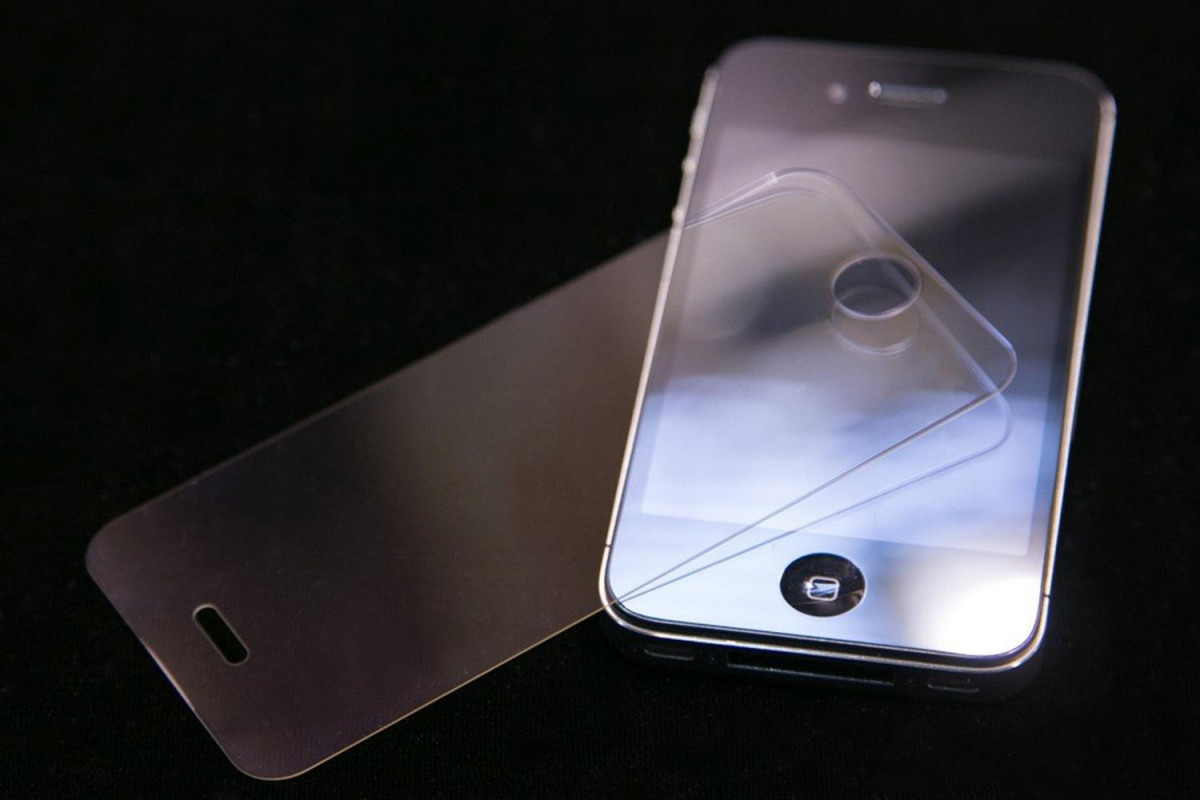
Which safety glass is the best: compare options
Each of the described types of protective glasses has its pros and cons. A direct comparison will allow you to conclude which glass is better:
Gorilla Glass vs. dragontrail
The entry of Dragontrail glass into the market caused a sensation, because, according to tests, it turned out to be stronger than the monopoly leader Gorilla Glass. Corning quickly corrected this situation by issuing new modification- for 2016, Dragontrail is inferior in strength to both Gorilla Glass and Sapphire. However, the Asahi product has a number of significant advantages: firstly, Dragontrail glass costs less, which is reflected in the final price of the gadget, and secondly, it is very light and almost does not affect the overall weight of the device.
Gorilla Glass vs. Sapphire
GT advertised its glasses as being the strongest and most durable, which was a challenge for Corning. In 2014, they conducted a series of tests that revealed that in terms of reliability, Gorilla Glass is not a competitor to Sapphire glasses. The Corning glass, after a simulated active use, burst under a load of as much as 197 kg, while the sapphire crystal gave up, barely taking the bar of 73 kg. Another drawback of Sapphire is the cost: a sheet of synthetic sapphire is ten times (!) More expensive than a sheet of Gorilla Glass. The high cost of sapphire - main reason why manufacturers avoided working with this material for so long.
Conclusion
In the ranking of protective glasses for a smartphone, Gorilla Glass technology would take the first line - unfortunately, so far neither Asahi nor GT Advanced are able to impose serious competition on Corning. Second place would go to Dragontrail: Japanese manufacturer quite capable of achieving the stated goal - in the coming years to occupy a third of the market. As for sapphire crystals, it is still doubtful whether they should be used in the production of gadgets - the smartphone user does not receive any benefits, but noticeably overpays.







